#Bernard Pagès
Text

Bernard Pagès, Hommage à Albert Camus, 1985
62 notes
·
View notes
Text

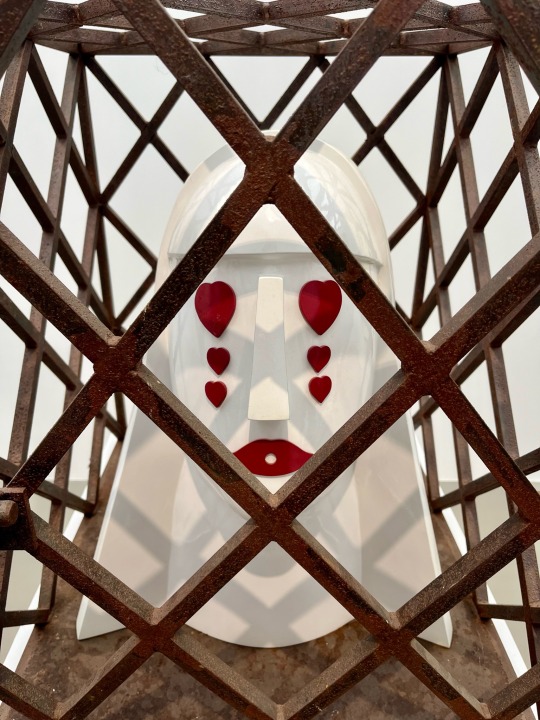
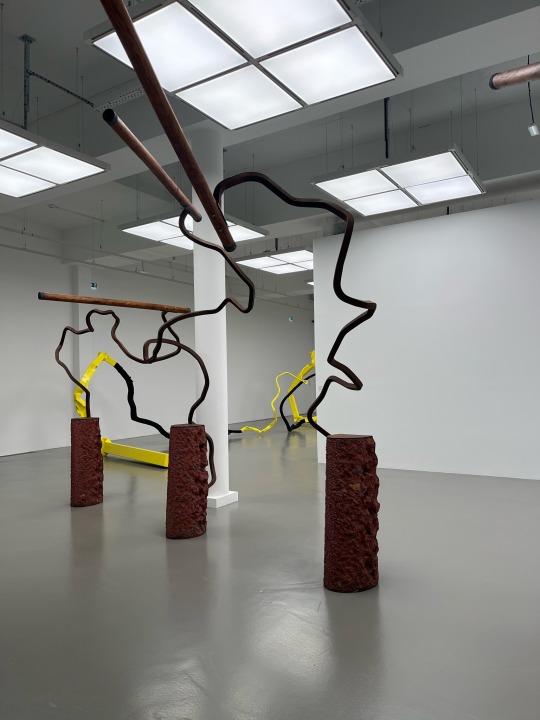
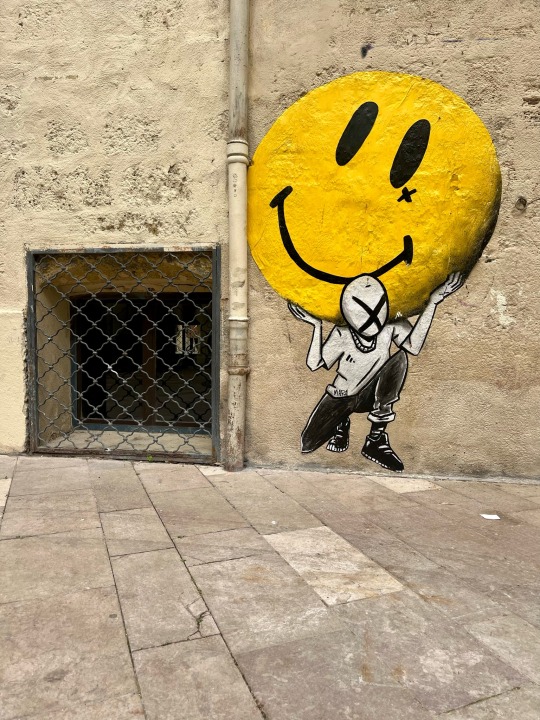
Francis Bacon, Study of Isabel Rawsthorne, 1966, Paris, Centre Pompidou + Eduardo Arroyo, Doña Inés, 2007, Collection Pimpi Arroyo + Bernard Pagès + MARA at Place Saint-Ravy.
April 7, 2024. Took Le Boyfriend to see the Entre les lignes at the Mo.Co, which I visited last month. We didn't have the time to do the full circuit so Chapters 4 and 5 at the second site will have to be for a different day.
He's usually a speed runner when it comes to getting through contemporary expositions but I think he broke a record this time around. We did have the time to visit a small gallery which is currently hosting an exhibition about a local street artist we really like, and I want to say we spent more time there then we did at the Mo.Co (which is technically two buildings, three floors altogether).
#phd life#art history#studyblr#day in the life#museums#art exhibition#100 days of productivity#contemporary art#phdblr
3 notes
·
View notes
Photo





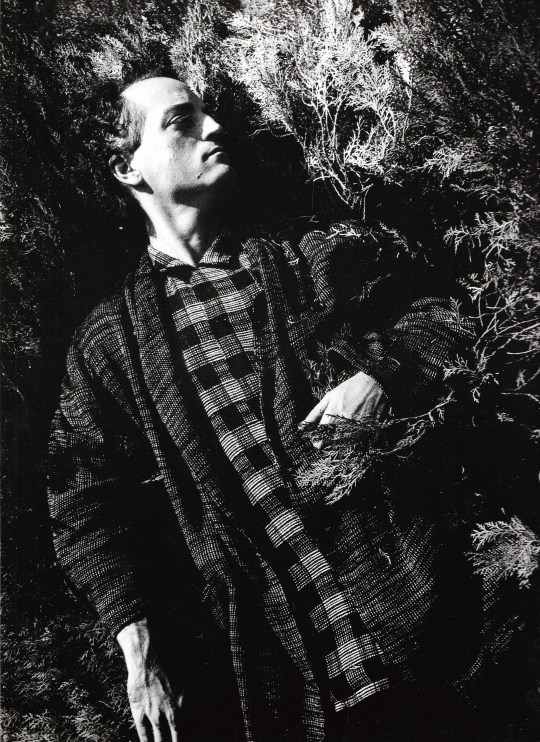

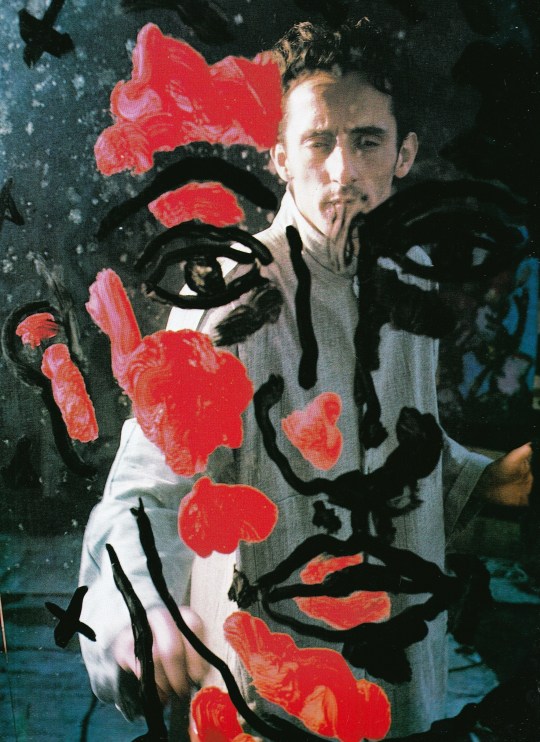
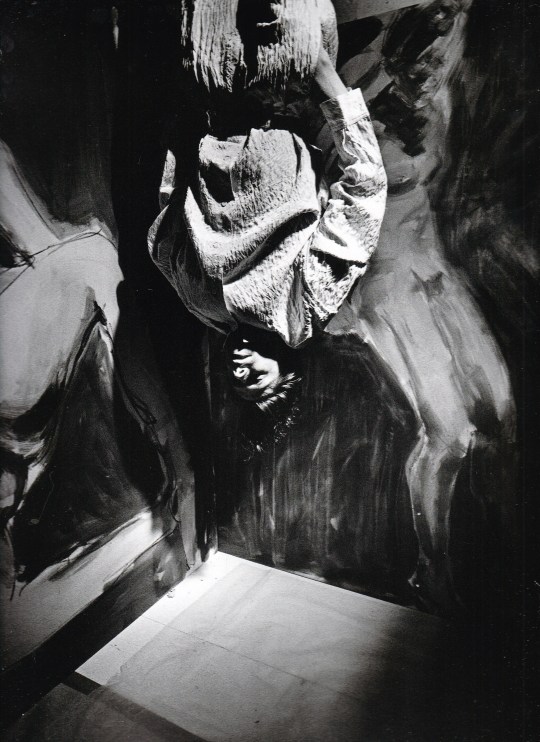

Métaphore Keiichi Tahara
Kyuryudo Art Publishing, Tokyo 1986, 178 pages, 26,5 x 36,5 cm, softcover, ISBN 9784763086198
euro 160,00
email if you want to buy [email protected]
A photo book "Metaphore" by Keiichi Tahara (1951-2017), one of Japan's leading photographers after the war. Since the 1970s, based in Paris, he has been attracting attention for his sculptural and visual monochrome works that skillfully use "light and shadow", and has been highly acclaimed for his contemporary art works with the motifs of "city" and "window". increase. Since then, he has been active in a wide range of fields such as architecture, sculpture, and installation, as well as photography. This is a collection of works composed of "fashion photographs" that are unique to Tahara, and is a collaboration with Yohji Yamamoto. In 1982, Yohji boarded Paris Fashion Week with Comme des Garcons and announced a collection called "The Impact of Black". In this book, Tahara modeled the artist, 1981-86. The portrait taken during is posted. A number of works in the black world with a strong masculine element, which are rare in this era.
Photographs of French artists, plus examples of their work. Artists include Bernard Lamarche-Vadel, Gérard Garouste, Jean-Pierre Bertrand, Jean Degottex, Jean-Marc Bustamante, Alain Borer, Pierre Antoniucci, Jean-Charles Blais, Luciano Castelli and Bernard Pagès.
Cet oeuvre regroupe les photos prises pour les catalogue Yohji Yamamoto pour l’homme de 1981 à 1986
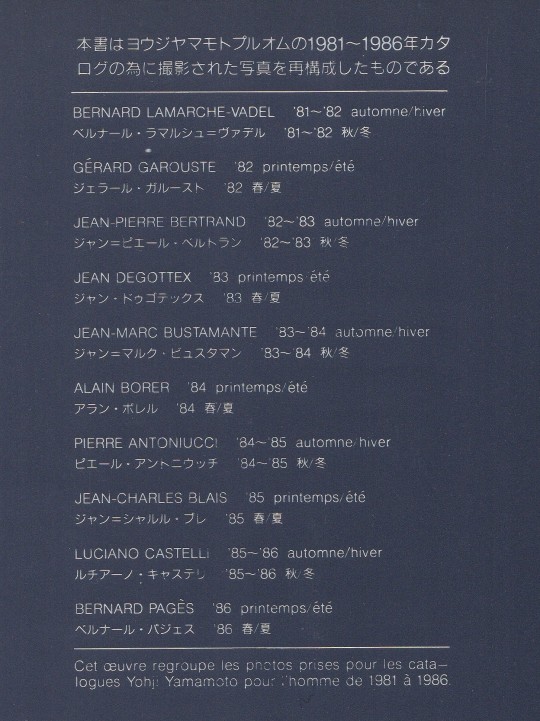
28/02/23
orders to: [email protected]
ordini a: [email protected]
twitter: @fashionbooksmi
instagram: fashionbooksmilano, designbooksmilano tumblr: fashionbooksmilano, designbooksmilano
#Keiichi Tahara#Yohji Yamamoto#homme de 1981 ò 1986#The Impact of Black#French artists#photography books#fashion books#fashionbooksmilano
11 notes
·
View notes
Text

Bernard Pagès
Profilé aux tétraèdres, 2017
Painted beam and oxidized copper foils
100 x 75cm
39.37 x 29.53 in
1 note
·
View note
Quote
Some critics have also questioned his methodological rigor. In his 2010 book, “On War in Philosophy,” Lévy extensively quotes Jean-Baptiste Botul, a 20th-century philosopher and originator of a school of thought known as Botulism. But Botul never existed and is the satirical invention of the writer Frédéric Pagès. Lévy, at the time, was contrite and complimented the hoaxer for his ruse.
Bernard Henri-Lévy Chooses War Zones in Ukraine Over Salons - The New York Times
0 notes
Text

Bernard Pagès | Mouvoir https://www.artlimited.net/agenda/bernard-pages-mouvoir-exhibition-galerie-ceysson-benetiere-saint-etienne/en/7584820
0 notes
Text

Bernard Pagès
L’Acrobate XVI, 2014
2 notes
·
View notes
Photo
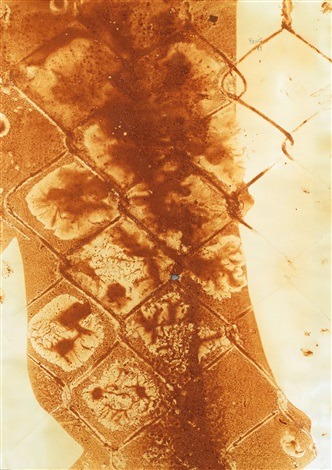
#Bernard Pagès#pagÈs#chain link fence#chain link#fence#chain#link#drawing#untitled#mixed media on paper#30 x 22 cm. (11.8 x 8.7 in.)#1968
34 notes
·
View notes
Photo


Bernard Pagès
25 notes
·
View notes
Photo


Bernard Pagès ( b. 1940)
Empreinte de tôle ondulée, 2011. Imprint of corrugated iron sheet, 100 x 70 cm
L'Acrobate XVI, 2014. Column of copper foils, ten steel beams, 485 x 210 cm
Bernard Pagès introduces the movement Supports/Surfaces in 1967. He uses abandoned materials to realize his sculptures (bricks, wood, stone floor, stone, gravel, pipes...) He lists his sets by Inventories, Lists, Enumerations. As time goes by, his work turns to more and more colored and baroque works.
source: Ceysson & Bénétière gallery
0 notes
Text
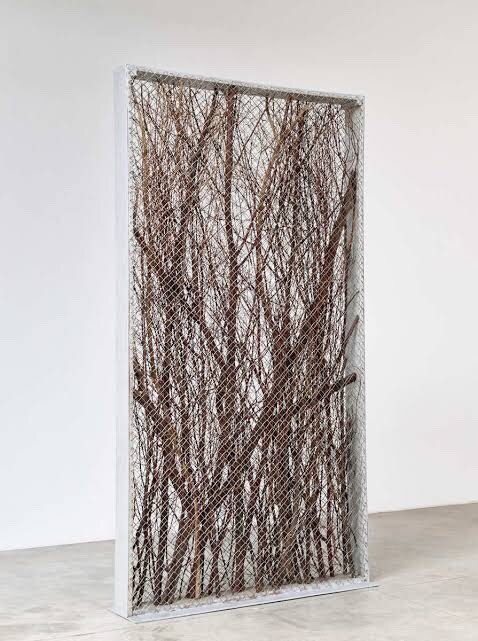
Bernard Pagès. Branches et Cadres Grillagé, 1969
2 notes
·
View notes
Text
Academic Book Review

From Martyr to Murderer: Representations of the Assassins in Twelfth and Thirteenth Century Europe by Meriem Pages. Syracuse: Syracuse University Press, 2014. Pp. xiv, 239. $39.95.
Argument: Ever since the publication of Orientalism, medievalists have attempted to apply Said‘s theses on the Western European representation of the Muslim Other to the Middle Ages. Pagès examines the sect of the Nizari Isma’ilis (known for its use of political assassination) and its complicated relationship with Western Europe, providing a fascinating case study of such an endeavor.
The representation of the Nizaris, who came to be known in Europe as the Assassins, closely parallels that of Islam in the Middle Ages. However, how the sect was perceived in Latin Christendom is nuanced and complex, leading to divergent readings of the Assassins. These portrayals ranged from allies in the earliest texts to exotic “marvels of the world” in works of the thirteenth century and thereafter. By delineating how the sect’s representation developed in medieval historical and literary works, From Martyr to Murderer shows that the Assassins did not originally inspire alienation about them in medieval Europeans reading and writing. Pagès’s adroit exploration of the Assassins legend leads us to question our preconceived notions about the larger issue of the image of Islam in the Middle Ages.
***Full review under the cut.***
Chapter Breakdown
Chapter One: Historical overview of the Nizari sect. Also contains an overview of 20th century scholarship about the Assassins (both historical surveys and critical debates).
Chapter Two: Argues many early accounts of the Nizaris view the Assassins as potential allies. Analyzes the anonymous Tractatus de locis et statu sancte terre ierosolimitane, William of Tyre’s Historia rerum in partibus transmarinis gestarum, and Walter Map’s De nugis curialium, as contrasted with Burchard of Strassburg’s account preserved in the Chronica Slavorum.
Chapter Three: Argues that texts which depict the Assassins’ murder of Conrad of Montferrat mark a shift in literature, in which the Assassins’ fanaticism becomes emphasized (typically to serve political ends in the conflict between England and France). Takes as its foci the Chronique d’Ernoul et de Bernard le Tresorier, the Estoire de la Guerre Sainte, and William of Newburgh’s Historia rerum Anglicarum.
Chapter Four: Argues that the Assassins became increasingly exoticized in the 13th century, and instead of mostly appearing in historical literature, they became staples in “wonder” (or “marvelous”) literature. Takes as its foci the Old French translation of William of Tyre’s Historia (also called Estoire d’Ecacles empereur), Jacques de Vitry’s Historia Orientalis, Jean de Joinville’s Historia de Saint Louis, The Travels of Marco Polo, and Troubadour poetry.
Chapter Five: Argues that mid-14th century France saw a shift in liturature focusing heavily on sensual Assassin women. Takes as its foci the Baudon de Sebourc and the Histoire de la male marastre.
Theories/Methodologies Used
Edward Said’s Orientalism
historical approach
Reviewer Comments
I picked this book up because I wanted to expand my knowledge of medieval representations of Islamic (or Islamic-adjacent) figures. I have very little background in medieval Islamic history, so I cannot speak to how accurate this book is or its success on that front. What I can comment on, however, is how this book presents its argument and how it analyzes European texts.
I really like that this book pushes for a more nuanced view of medieval European reactions to Islam. We generally tend to map current prejudices against Islam onto the past, and though some of those prejudices are still apparent in some texts, they are absent in others. Thus, I appreciated Pages’ call for more nuance, as well as the desire to put every text in historical and cultural context. I was particularly convinced by her arguments that were supported by careful close reading, such as in chapter five when she explains how Assassin princesses are used as tools in service to medieval Christians’ desire for guilt-free adventure.
To get the most out of this book, I would recommend having a basic understanding of Islamic history, particularly as it relates to the Crusades and formation of the Nizari sect. The first chapter gives an overview of the history of the Assassins, but this overview moves very fast and presumes some knowledge on the part of the reader. Without this knowledge, the first chapter can be more confusing than enlightening. Throughout the rest of the book, history does tend to overwhelm the literary analysis, so I would have also liked to see more priority given to close reading. Much of the close reading that does exist is good, though tends to rely somewhat on what authors could have done rather than what’s actually there. I suggest avoiding this book if you’re looking for an objective history of the Assassins or books which focus on disproving myths about medieval Islam/Assassins, as the majority of the text does not deal with that. It’s very clearly a study of Western representations of Assassins, so be prepared to grapple with some Orientalism and similar issues - Pages does not aim to give readers a “true look” at the Assassins from their own perspective. Instead, this is a book about how the West’s legends about Assassins reveals different things about medieval European literature and culture.
Recommendations: This book might be useful if you’re working on
medieval French literature
medieval Islam, Islamic history, Islamic sects
literary representations of the Assassins
history of the Crusades
3 notes
·
View notes
Text
Another Wikipedia hole
(Previously)
The end result of which wound up in my latest newsletter. First of all, from the page of Carla Bruni:
In 2001, Bruni had her first child, son Aurélien, with philosophy professor Raphaël Enthoven. Bruni has been described as having been the mistress of Enthoven's father, journalist Jean-Paul Enthoven, when she began her relationship with the younger Enthoven, who was at the time married to novelist Justine Lévy; Bruni claims that she only went out with Jean-Paul Enthoven a few times and was never his lover, and that Raphaël Enthoven was already divorcing his wife when she encountered him months after last seeing Jean-Paul.
Enthoven, the younger:
Enthoven was born in Paris, the son of journalist Catherine David and publisher Jean-Paul Enthoven. In 1996, he married writer Justine Lévy, daughter of philosopher Bernard-Henri Lévy, himself a friend of Enthoven's father. In 2000, Enthoven began an affair with singer Carla Bruni while she was the mistress of Raphaël’s father and which eventually prompted divorce from Lévy in 2001.
Then, on Lévy’s page
On 21 September 1996 she married Raphaël Enthoven, the son of her father's best friend, Jean-Paul Enthoven, who left her in 2000 for model and singer, Carla Bruni (at the time his father's girlfriend and who is now married to former French President Nicolas Sarkozy). She wrote a novel whose story paralleled her own life. The 2004 book was released in France under the title "Rien de Grave" (published in English in 2005 as Nothing Serious).
And onto the Justine’s father, Bernard-Henri Lévy:
Lévy has been married three times. His eldest daughter by his first marriage to Isabelle Doutreluigne, Justine Lévy, is a best-selling novelist...Lévy has been friends with Nicolas Sarkozy since 1983.
[...]
Lévy was publicly embarrassed when his essay De la guerre en philosophie (2010) cited the writings of French philosopher Jean-Baptiste Botul. Botul's writings are actually well-known spoofs, and Botul himself is the purely fictional creation of a living French journalist and philosopher, Frédéric Pagès.
And finally, Botulism:
The hoax began in 1995, when Frédéric Pagès, a former professor of philosophy and a journalist for the satirical weekly newspaper Le Canard enchaîné (The Chained Duck), invented Jean-Baptiste Botul and his chief work, entitled The Sexual Life of Immanuel Kant. The general idea behind Botul and botulism was that philosophy is too vital to be left solely in the hands of professional philosophers.
And there I thought Non-Fiction was heightened farce...
0 notes
Text
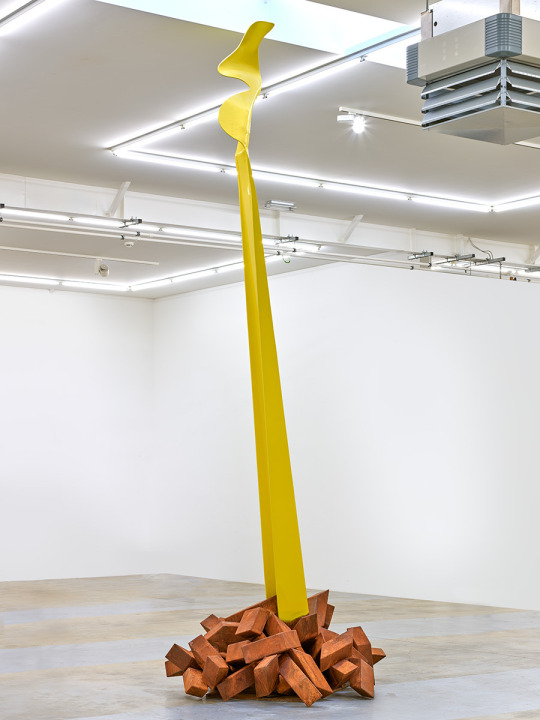
Bernard Pagès
Échappée IX, 2018
HEA 240 mm tapered and painted, twisted top and 120 x 120 mm bunkers
450 x 250cm
177.17 x 98.43 in
0 notes
Text
The void, the light, the sex
In " Midnight’s childrens" Salman Rushdie recounts that, in India at the end of the 1940s, to circumvent the rule that on the film screen prevented lovers from touching themselves, to avoid corrupting the youth of the country, he invented a brilliant device: They kissed the objects. So, a lover kissed an apple and then passed it on to his boyfriend’s passionate lips and so on with various props: from fruit to swords to teacups. The indirect kiss was born which, Rushdie writes, represented "an infinitely more refined conception of everything we see in cinema today and really full of desire and eroticism". Yet, unfortunately, its success was fleeting.

*
And the season in which we were convinced that the "indirect life", the Net stands between us and the rest of the world during the first lockdown , even with some sacrifices, could worthily substitute for everyday life ended. In the second enclosure (in Italy lockdown can not be said) have practically disappeared the thousands of conferences/ exhibitions/ videos that have flooded the first and in general has passed from we are all on the same boat to a widespread astiosità.
Now, apart from the fact that the nostalgia of pre covid everyday life leads us to assume it as a private normality of a critical vision, it seems to us that we can define this period as an acceleration/explication of processes that have been going on for some time. We take poor Debord when he said that in the Market (he said in the Show): "Everything that was directly lived has moved away in a representation-... the show is not a supplement to the real world, its decoration overlaid. It is the heart of the unrealism of the real world".
It does not mean to trace a continuity: the acceleration was so great that it also became qualitative, but to question the "we will come back as before". Since we in the market have found that the reduction of rights has been taken without problems, it cannot be the prolongation of this condition that is the cause of the general discontent, or at least not the only one. It may be, however, at least in part, the increased awareness that the first will not return. After all, the joyful journey that we had already begun towards the exchange between our, now useless, autonomy and the phantasmatic flow of goods offered by the changing Market will not, at this point, be able to consolidate and restart. The distance between the innovation of the Market and the resistance of old habits, tends, sometimes and only for a while, to create discomfort.
Until now, therefore, we have avoided offering ourselves an apple to the indirect kiss of the Net. We already have in other articles motivated because, during the first lockdown, we did not recommend books, movies or made videos etc. On the other hand, one of our little habits is to recommend some text, usually in summer (here you can find that of last year).
However, at this stage when such advice, as I said, does not seem to be well accepted or required, it seems to us the best one to do so, loving the idea that it is unheard of advice.
The sex life of Immanuel Kant
Jean Baptiste Botul
Let us imagine that in 1945, when the Red Army entered Königsberg, a handful of families began an extraordinary journey that led them to the foundation of New Königsberg in Paraguay. We also assume that these families idolize Kant, the most famous of their fellow citizens, and live like him, dress like him etc. A fundamental problem arises: if Kant lived in chastity, how can a community inspired by him not become extinct? The text contains a series of lectures, collected by Frédéric Pagès, held by the philosopher Jean Baptiste Botul to the attentive community of Kantians.
Botul raises a series of questions about the contrast between philosophy and marriage and more generally between philosophy and life. To respond, read again the Kantiane categories in this perspective. The thing in itself can only be sex (and in fact Kant develops a fetishism), metaphysics the desire to look under the skirts of reality and criticism, therefore, the attempt to harness it. Even the reasoned reading of the letters is interesting. Dear Marie Charlotte Jacobi invites the great thinker to find her and among other things writes : I will wait for you and my watch will be recharged". An extremely obscure phrase, but not for Botul who connects us to Kant’s stockings. Being a famous hypochondriac, the philosopher refused the use of garters fearing their pressure on the arteries. To hold the stockings he used the case of a watch with the respective spring, through which he adjusted the pressure of the wire. In this perspective, evidently, Maria Charlotte was making a clear sexual invitation.
This book is particularly dear to us because it made ridiculous the obnoxious Bernard-Henri Lévy, who did not realize, despite the hilarious conclusions of the lectures, that the philosopher Botul was but an invention of Frédéric Pagès and quoted it in his essay.
original book
The ambition of Vermeer
Daniel Arasse
Why take care of Vermeer, since we define ourselves as a collective research of the contemporary? In fact it is to highlight how in this text by Daniel Arasse we avoid some clichés that now characterize the readings of the sphinx of Deft (including this nickname attached to poor Vermeer). After all, compared to his great contemporaries (recently we mentioned Metzu), from the first major modern exhibition dedicated to Dutch painting to today, ours has always attracted attention for its specificity, often attributed to a sort of enigmatic aura.
Arasse analyzing life, debunking the myth of his being misunderstood, and especially in detail the works shows how, instead, the effect of his paintings is a deliberate artistic choice of Vermeer. The fame of the painter is that of "fine painter" that can be translated into meticulous and meticulous. It is an obvious contradiction to the fact that Vermeer paints in nuance, even in the smallest of canvases (La merlettaia, 24*21 cm).
On the other hand, the fact that the "realism" of Vermeer’s paintings is actually more a search for coherence and balance, or disequilibrium, within the canvas itself can have many examples: from the semi-finished bulb hand of the Art of Painting (1665-1666) to the picture in the picture of the Woman with Libra, which goes lower to the right of the female figure than to the left (certainly not by mistake).
We could give several examples, such as the use of perspective from below, but, to demonstrate his conscious poetic research, it seems useful to us the use of light, which is often cited as a characteristic evidence of the painter’s finesse. In the Allegory of the Catholic faith the window, which illuminates the scene, is ajar. This, in addition to being an indicator of the author’s Catholic faith for which faith (light) must be found through darkness, serves in the representation to: indicate that with regard to the picture the light has placed the author, prevent the windows from being reflected in the glass sphere hanging above the head of the protagonist. The sphere is a recurrent element in many canvases of the time, but normally it acts as a mirror both for things (in this case it could easily reflect a cross) and for people, often a self-portrait. Vermeer instead makes them represent only light and color, represented by colored spots.
That then, more than the other painters of his time, Vermeer could take the luxury of creating his own poetics and sometimes get out of the clichés of contemporary representations (for example, not executing portraits) it is due to the fact that, having other proceeds, Painting was not for him a source of income. So much so that you can paint 2, 3 paintings a year and keep some paintings (even as challenging as the Art of painting) for yourself.
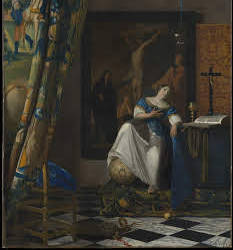
Aesthetics of the Void - art and meditation in oriental cultures
Giangiorgio Pasqualotto
Which east and which cultures? It’s a necessary question to avoid falling into false generalizations. Well here we talk about Japan and China and more specifically classical Taoism and Buddhism, as well as Chan and Zen Buddhism.
In essence it is argued, and certainly not a novelty since the text is part of a path of secular studies, which unlike the West, which fears the void, in these cultures it is the central core from which the energies and aesthetic provisions are directed. Provided we understand: the void is not interpreted as nothing, as not being, as the concept of emptiness but as the experience of emptiness, not being, as you can get with specific forms of meditation.
Meditation that is not prayer, no one is invoked, but it is focused attention to what happens in the heads, in the body and in the world. Such a practice is necessary to produce or enjoy such an aesthetic experience, the latter being itself a form of meditative exercise.
From here the author analyzes various forms of Chinese and Japanese art, giving an interpretation of its own starting from an in-depth analysis of the void (and of its dialectical opposite the full) in these cultures, and is the original character of the book. We will therefore understand why in the tea ceremony the path that crosses the garden that leads to the Sun (tea room) must be made of stones at a distance varying from each other, Because in haiku there cannot be a subject or that in ikebana symbolically the vertical branch stands for the sky, the median for man and the horizontal for the earth. We are particularly interested in the discourse on the theater no, if only because by poor Westerners hating the void, is what we have so far understood the least.

*photos are taken at the same time in the same place the days before the lockdown
there is no English version. we recommend this:
Francois Cheng Empty and Full: The Language of Chinese Painting
0 notes
